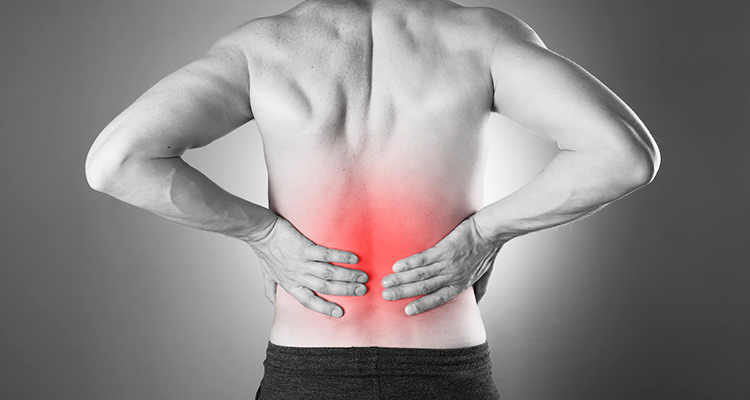
Mastering Back Pain Management: Understanding and Addressing Back Pain’s Common Causes
In today’s fast-paced world, back pain is a pervasive issue that frequently disrupts daily life. By delving into key factors that contribute to back pain and adopting effective management strategies, you can alleviate discomfort and significantly enhance your quality of life. This comprehensive guide offers insightful perspectives into the most common causes of back pain, managing Common Causes of Back Pain and equips you with actionable tips for both prevention and management.
1. Muscle or Ligament Strain: The Leading Culprit
Muscle or ligament strain often results from improper lifting techniques, sudden movements, or excessive stress on the back. These activities can lead to micro-tears in muscles or ligaments, causing discomfort. To manage this, practice proper body mechanics by lifting objects close to your body, bending your knees, and avoiding twisting motions. Engage in regular stretching routines, focusing on the back and core muscles, to improve flexibility and reduce strain. Gradually increase physical activity levels to strengthen the affected area and enhance resilience against strain-related pain.
2. Unraveling Disc-Related Issues
Spinal discs, acting as cushions between vertebrae, play a pivotal role in back pain. When a disc bulges or ruptures, it can press on nearby nerves, triggering pain and discomfort. To manage disc-related pain, focus on maintaining a healthy weight to alleviate pressure on the spine. Incorporate exercises that promote spinal flexibility and strengthen supporting muscles, such as gentle yoga poses or Pilates routines. Adopt ergonomic practices in daily activities, ensuring proper alignment of the spine during sitting, standing, and lifting.
3. Managing Arthritis-Associated Pain
Arthritis, an inflammatory condition affecting joints, can impact the back and lead to joint degeneration, causing pain and stiffness. Effective management involves a multi-faceted approach. Engage in low-impact exercises like swimming or cycling to keep joints mobile and reduce inflammation. Embrace an anti-inflammatory diet rich in omega-3 fatty acids, antioxidants, and whole foods to support joint health. Consider consulting a physical therapist for tailored exercise routines that strengthen supporting muscles and improve joint function. If needed, medical interventions such as non-steroidal anti-inflammatory drugs (NSAIDs) or corticosteroid injections can provide relief.
4. Strengthening Against Osteoporosis
Osteoporosis weakens bones and increases the risk of spinal fractures. To fortify bone health, focus on a well-balanced diet rich in calcium and vitamin D to promote bone density. Engage in weight-bearing exercises like walking, dancing, or stair climbing to stimulate bone growth. Incorporate resistance training with lightweight dumbbells or resistance bands to further strengthen bones and muscles. Regularly undergo bone density tests to monitor changes and adjust your regimen as needed. If indicated, your healthcare provider may recommend bone-strengthening medications to mitigate osteoporosis-related risks.
5. Navigating Scoliosis Challenges
Scoliosis, characterized by an abnormal curvature of the spine, often leads to persistent back pain. Management involves regular medical evaluations to monitor the curvature’s progression. Physical therapy plays a pivotal role in scoliosis management, focusing on exercises that enhance core strength, improve posture, and correct muscular imbalances. In moderate cases, bracing may be recommended to support the spine’s alignment during growth. Severe cases may require surgical intervention to stabilize the curvature and alleviate discomfort.

Exploring Less Common Causes:
While our primary focus centers on managing Common Causes of Back Pain and the most prevalent causes, our guide also sheds light on less common contributors to back pain, including infections, tumors, fibromyalgia, and endometriosis. These insights empower you to promptly seek professional assistance when warranted.
Should back pain cast a shadow over your daily life, prompt action to seek medical attention is paramount. Our guide steers you through the necessary steps, encompassing symptom assessment, medical history evaluation, and diagnostic tests such as X-rays and MRIs, culminating in personalized treatment recommendations.
Proactive Measures for a Pain-Free Future:
Embrace a range of proactive measures to thwart the onset of back pain:
- Maintain a healthy weight to ease strain on your back.
- Find a topical product like Re+ to help maintain movement.
- Cultivate a consistent exercise routine to bolster both back and abdominal muscles.
- Master proper lifting techniques prioritizing leg engagement over back strain.
- Prioritize optimal posture, whether seated or standing, to provide unwavering support for your spine.
- Opt for a firm mattress to foster appropriate back alignment during sleep.
For further inquiries or concerns regarding back pain, do not hesitate to consult healthcare professionals who can provide tailored guidance. By equipping yourself with knowledge and proactively integrating these practices, you can pave the path toward a healthier, pain-free back and elevate your overall quality of life.